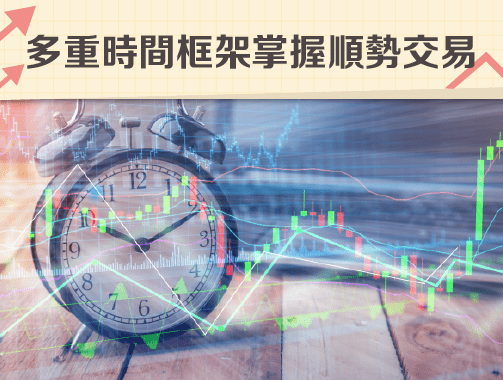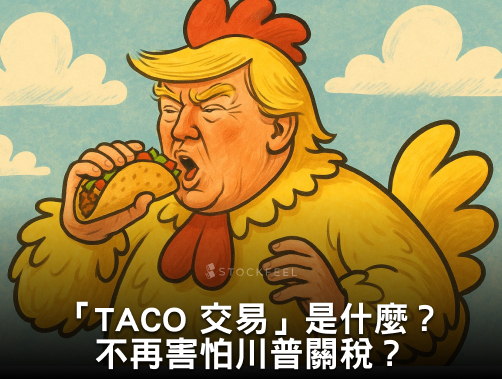「降息」,是 2024 年最熱門及最重要的話題,近期隨著通膨數據、勞動市場、零售數據、經經濟成長降溫,市場共識認為 9 月 19 日的美國 FOMC 會議,基本上一定會降息,但現在市場在猜測是降息 1 碼還是 2 碼,不斷的尋找線索,但你知道除了 9 月的 FOMC 之外,8 月底還有一個決定全球經濟格局的重要會議嗎?甚至可能會釋出關於降息的消息,就是 Jackson Hole 全球央行會議,讓股感告訴你,Jackson Hole 的重要性及如何影響股市。
什麼是Jackson Hole?
Jackson Hole 是一年一度的全球央行年會,由美國堪薩斯聯邦準備銀行於每年 8 月下旬舉辦的年度盛會,也是歷史最悠久的央行會議之一,會議就在 Jackson Hole 這個地方舉行(這是其實是一個地名!), 會議將討論主要國家經濟體的貨幣政策,是受到各國央行關注的盛會,將邀集央行官員、經濟學家、金融市場參與者、政府官員與媒體人員共聚一堂,探討重要的長期政策,會後將發布會議記錄提供給全球人士參閱。
2024 年 Jackson Hole 會議主題
今年 Jackson Hole 在 8 月 22 日至 24 日舉行,將聚焦在「重新評估貨幣政策的有效性和傳導性」(Reassessing the Effectiveness and Transmission of Monetary Policy)」。 Fed 主席 Powell 於 8 月 23 日美東時間上午 10:00(台北時間晚上 10:00)發表主體演講。
Jackson Hole對股市的影響
Jackson Hole 無疑是 8 月最重要的大事,因為本場會議內容探討的貨幣政策,涉及到全球總體經濟發展,將決定全球經濟的走向,故會議內容及那位一句話就能撼動股市的男人- Powell 表述的內容,將深深影響股市。
筆者回測歷史數據發現,Jackson Hole 會議前後 5 個交易日,美股大盤的震盪幅度會放大,那該如何應對 Jackson Hole 的到來呢?筆者實際回測 2020~2024 年的數據,分析並提出建議給讀者參考。
2023年,8/24~8/26
在會議前下跌修正,在會議的第一天來到相對低點,後續回歸正常交易格局,並再度上漲。
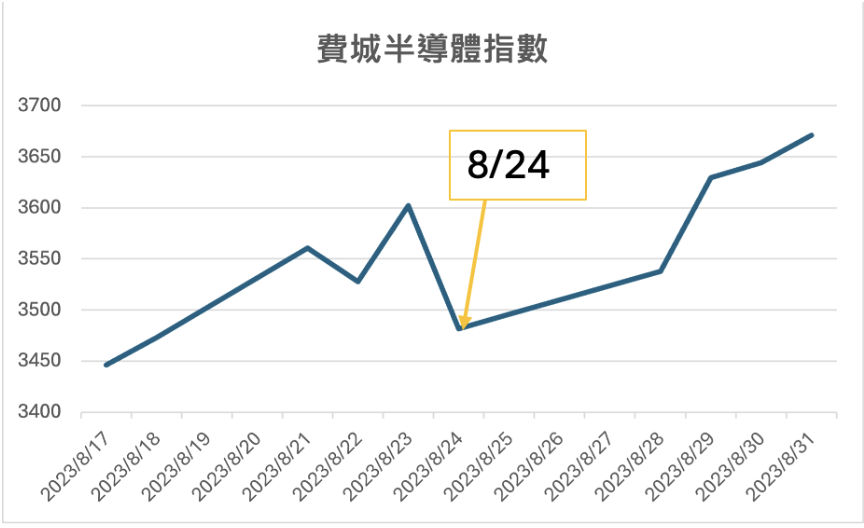
2022年,8/25~8/27
在會議前上漲,在會議的第一天來到相對高點,後續出現下跌趨勢。
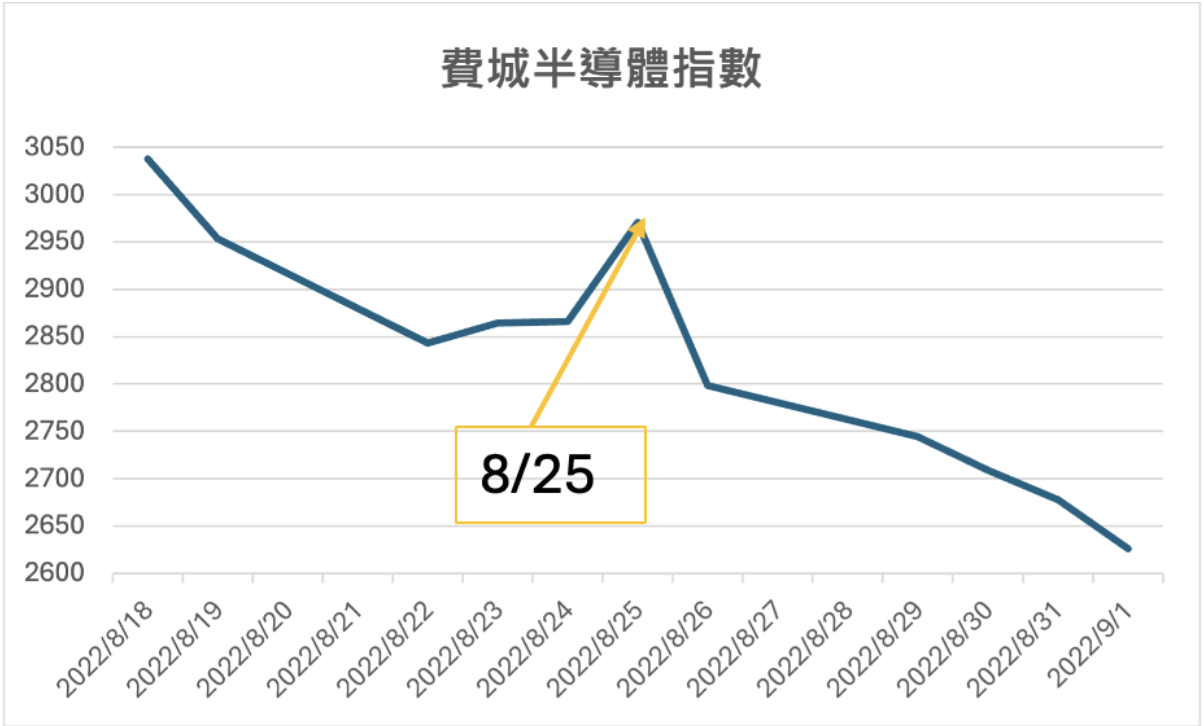
2021年,8/26~8/28
會議前上漲趨勢放緩,在會議的第一天後,再度上漲一個小波段。
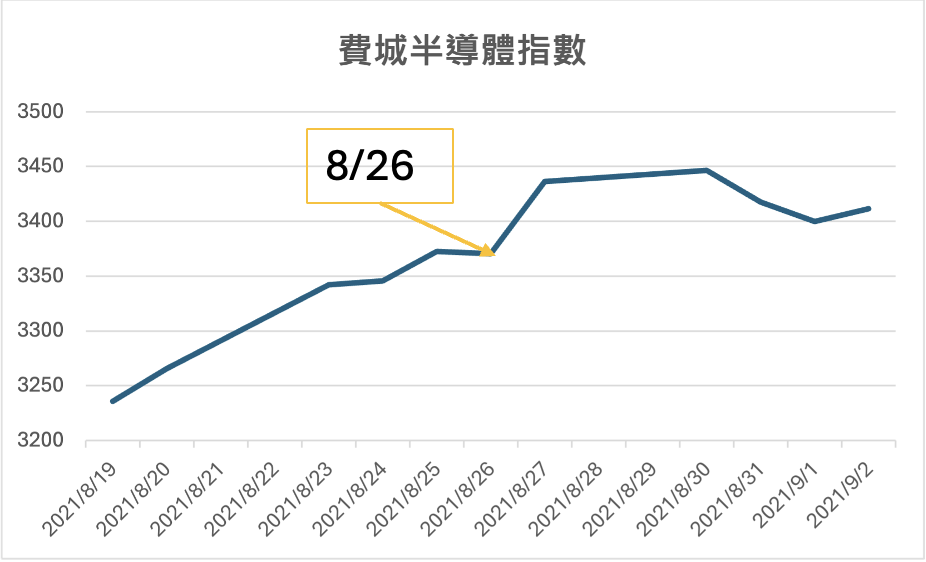
2020年,8/27~8/28
在會議前緩步上漲,在會議的第一天出現下跌,但後續再有一波上漲波段。
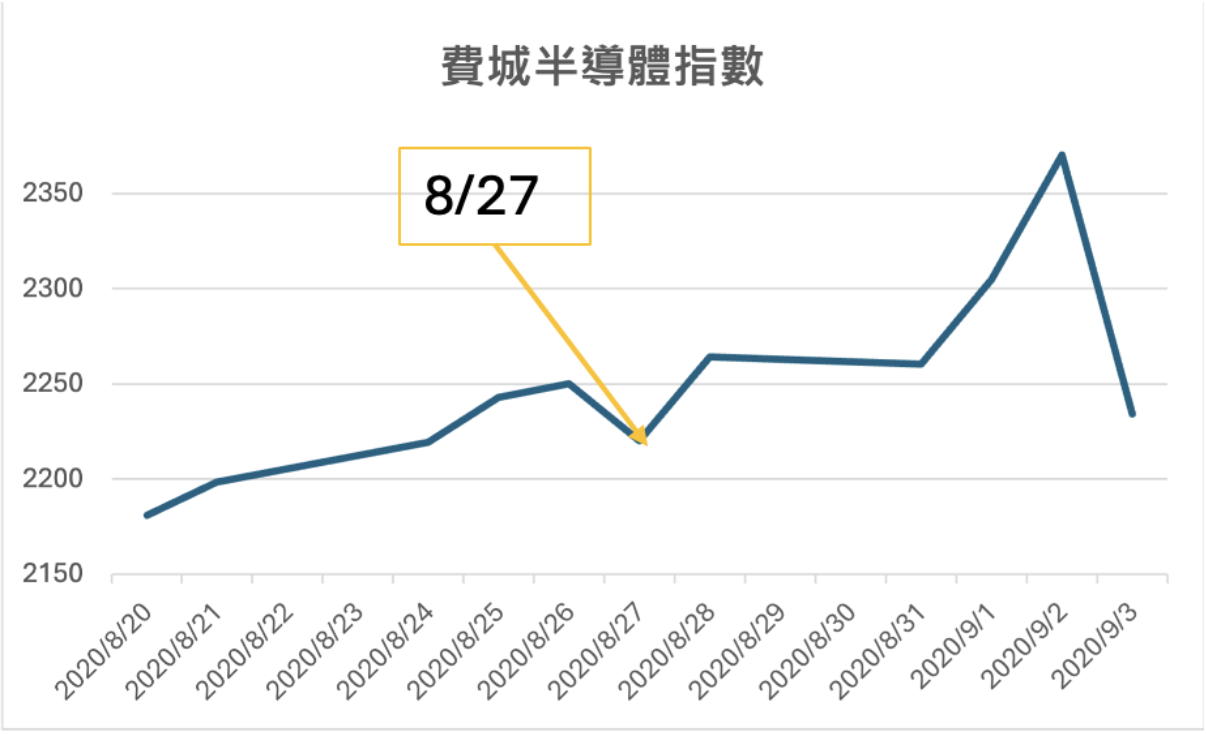
回測數據小結
觀察 2020~2023 年的費城半導體走勢,除了 2022 年是因為當年 FED 啟動暴力升息循環,當時的時空背景是投資機構認為說,Powell 會在 Jackson Hole 會議釋放暫緩升息的鴿派消息,結果 Powell 仍持鷹派看法,強調會持續升息,因此費城半導體一路續跌。
若排除 2022 年,在 2020、2021、2023 年這三年中,雖然走勢不完全相同,但可以看出一個規律,在會議前若是上漲波段的趨勢,當時間越靠近 Jackson Hole ,上漲幅度會放緩或出現下跌修正,因為市場擔心會有不確定的利空消息出現,但在 Jackson Hole 的第一天會議結束後,市場消化不確定的消息,現有的消息已被確定,費城半導體將重回正常交易格局,甚至再有一波上漲波段。
結論&未來看法(8/16)
Jackson Hole 是一年一度最重要的經濟會議,會議的內容將影響全球經濟,是投資人一定要關注了解的資訊。依據歷史數據回測,在 Jackson Hole 的前 5 個交易日,費城半導體指數的震盪會放大,若之前是上漲趨勢話,可能會出現漲幅放緩或下跌修正,因為擔憂會有不確定的利空,但在 Jackson Hole 會議後,市場消化完不確定的消息後,將重回正常交易格局。由於費城半導體指數與台股加權指數關聯性高,若近期台股出現震盪,先不需要過於擔心,重點是會議的內容。
本次必須要關注 Fed 主席 Powell 的演講,對於美國經濟成長幅度、通膨、勞動市場的看法,以及是否會談論對於 9 月降息的看法,目前是考慮降息 1 碼還是 2 碼,這將決定費城半導體指數後續的走勢,若釋放鴿派消息,將有助於股市再有一波上漲波段,若仍保守看待及沒有釋出更多消息,恐怕大盤短期將走向震盪。不過以歷史數據及近期正向的總經數據(如通膨、零售消費、經濟成長、勞動市場)來看,筆者保持樂觀及謹慎的態度,面對後續股市的發展!
Powell 於 Jackson Hole 演講看法 (8/23)
Powell 表示「經濟仍在以穩健的步伐增長,通膨的上行風險已經減弱,而勞動市場的下行風險則增加了」,「減息的時機仍將取決於未來公佈的數據、不斷變化的前景和風險平衡」。
如同 8/6 筆者針對薩姆規則的文章中及 8/23 的股感盤後研究室提及,美國經濟仍是處於軟著陸,不過仍要持續追蹤最新的數據, 9 月 6 日公布的失業率及非農就業將成為近期最重要的總經數據,將影響 9 月 19 日 FOMC 的決議內容。
目前觀察美股(S&P 500 及費城半導體指數)及台股(加權指數),成交量不在像前兩週量縮震盪,成交量有逐步放大,且出現正常交易格局,具有優異基本面的個股也慢慢出現上漲趨勢,大致上與過往歷史走勢相似,與 8/16 撰寫本文時的看法一致,保持樂觀及謹慎的態度,面對後續股市的發展!
【延伸閱讀】
Powell 的 Jackson Hole 演講內容(中英文逐字稿)
Four and a half years after COVID-19’s arrival, the worst of the pandemic-related economic distortions are fading. Inflation has declined significantly. The labor market is no longer overheated, and conditions are now less tight than those that prevailed before the pandemic. Supply constraints have normalized. And the balance of the risks to our two mandates has changed. Our objective has been to restore price stability while maintaining a strong labor market, avoiding the sharp increases in unemployment that characterized earlier disinflationary episodes when inflation expectations were less well anchored. While the task is not complete, we have made a good deal of progress toward that outcome.
在新冠疫情爆發4年半後的今天,與疫情相關的經濟扭曲正在從最嚴重的狀態中逐漸消退。通貨膨脹率已大幅下降,勞動力市場不再過熱,當前市場狀況比疫情前更加寬鬆。供應限制已經恢復正常,我們雙重使命所面臨的風險平衡也發生了變化。我們的目標是恢復價格穩定,同時保持強勁的勞動力市場,避免像過去通脹預期較不穩定時所出現的那種失業率大幅上升的情況。我們在實現這一目標方面已經取得了相當大的進展。雖然任務尚未完成,但我們確實已經取得了不少進展。
Today, I will begin by addressing the current economic situation and the path ahead for monetary policy. I will then turn to a discussion of economic events since the pandemic arrived, exploring why inflation rose to levels not seen in a generation, and why it has fallen so much while unemployment has remained low.
今天,我將首先討論當前的經濟形勢和貨幣政策的前進道路。然後,我將討論從疫情開始以來的經濟事件,探討爲什麼通脹上升到幾代人未見的水平,以及爲什麼在失業率保持低位的情況下通脹卻下降了如此之多。
Near-Term Outlook for Policy 政策的短期展望
For much of the past three years, inflation ran well above our 2 percent goal, and labor market conditions were extremely tight. The Federal Open Market Committee’s (FOMC) primary focus has been on bringing down inflation, and appropriately so. Prior to this episode, most Americans alive today had not experienced the pain of high inflation for a sustained period. Inflation brought substantial hardship, especially for those least able to meet the higher costs of essentials like food, housing, and transportation. High inflation triggered stress and a sense of unfairness that linger today.
在過去三年中的大部分時間裏,通脹率遠高於我們的2%目標,勞動力市場條件極爲緊張。聯邦公開市場委員會(FOMC)的主要關注點一直是降低通脹,這是完全正確的。在這次事件之前,當今大多數在世的美國人從未經歷過持續高通脹的痛苦。通脹帶來了巨大的困難,特別是對於那些最難以應對生活必需品,如食品、住房和交通成本上升的人來說尤爲如此。高通脹引發了壓力和一種持續至今的不公平感。
Our restrictive monetary policy helped restore balance between aggregate supply and demand, easing inflationary pressures and ensuring that inflation expectations remained well anchored. Inflation is now much closer to our objective, with prices having risen 2.5 percent over the past 12 months (figure 1) . After a pause earlier this year, progress toward our 2 percent objective has resumed. My confidence has grown that inflation is on a sustainable path back to 2 percent.
我們的緊縮貨幣政策幫助恢復了總供給與需求之間的平衡,緩解通脹壓力,並確保通脹預期保持穩固。現在通脹正更加接近我們的政策目標,過去12個月裏價格上漲了2.5%。在(通脹)今年早些時候暫停(放緩)之後,朝着我們2%目標的進展已經恢復。我越來越有信心,通脹正在可持續地恢復到2%的路徑上。
Turning to employment, in the years just prior to the pandemic, we saw the significant benefits to society that can come from a long period of strong labor market conditions: low unemployment, high participation, historically low racial employment gaps, and, with inflation low and stable, healthy real wage gains that were increasingly concentrated among those with lower incomes.
談到就業,在疫情前的幾年裏,我們看到了強勁的勞動力市場狀況給社會帶來的顯著好處:低失業率、高勞動參與率、處於歷史低位的種族就業差距,以及在通脹低且穩定的情況下,健康的實際工資增長,且這些增長越來越多地集中在低收入人群中。
Today, the labor market has cooled considerably from its formerly overheated state. The unemployment rate began to rise over a year ago and is now at 4.3 percent—still low by historical standards, but almost a full percentage point above its level in early 2023 . Most of that increase has come over the past six months. So far, rising unemployment has not been the result of elevated layoffs, as is typically the case in an economic downturn. Rather, the increase mainly reflects a substantial increase in the supply of workers and a slowdown from the previously frantic pace of hiring. Even so, the cooling in labor market conditions is unmistakable. Job gains remain solid but have slowed this year. Job vacancies have fallen, and the ratio of vacancies to unemployment has returned to its pre-pandemic range. The hiring and quits rates are now below the levels that prevailed in 2018 and 2019. Nominal wage gains have moderated. All told, labor market conditions are now less tight than just before the pandemic in 2019—a year when inflation ran below 2 percent. It seems unlikely that the labor market will be a source of elevated inflationary pressures anytime soon. We do not seek or welcome further cooling in labor market conditions.
如今,勞動力市場已從之前的過熱狀態大幅降溫。失業率在一年多前開始上升,目前爲4.3%,以歷史標準衡量仍然較低,但比2023年初的水平高出將近整整一個百分點。其中大部分上升是在過去六個月中實現的。到目前爲止,失業率上升並不是裁員增加的結果,而裁員是經濟衰退時期的典型情況。相反,這一增長主要反映了工人供給的大幅增加以及之前瘋狂的招聘速度有所放緩。即便如此,勞動力市場狀況的降溫是毋庸置疑的。就業增長保持穩健,但今年有所放緩。職位空缺下降,職位空缺與失業的比率已回到疫情前的水平。招聘率和離職率現在低於 2018年和2019年的水平。名義工資增長有所放緩。總而言之,現在的勞動力市場狀況不如2019年疫情之前那麼緊張,那一年的通脹率低於2%。勞動力市場似乎不太可能在短期內成爲通脹壓力上升的根源。我們不尋求或歡迎勞動力市場狀況進一步降溫。
Overall, the economy continues to grow at a solid pace. But the inflation and labor market data show an evolving situation. The upside risks to inflation have diminished. And the downside risks to employment have increased. As we highlighted in our last FOMC statement, we are attentive to the risks to both sides of our dual mandate.
總體而言,經濟仍在以穩健的步伐增長。但通脹和勞動力市場數據表明情況正在演變。通脹的上行風險已經減弱。而就業的下行風險則增加了。正如我們在上一次FOMC聲明中強調的那樣,我們關注的是雙重任務兩方面的風險。
The time has come for policy to adjust. The direction of travel is clear, and the timing and pace of rate cuts will depend on incoming data, the evolving outlook, and the balance of risks.
現在是調整政策的時候了。前進的方向很明確,減息的時機和速度將取決於未來的數據、不斷變化的前景和風險的平衡。
We will do everything we can to support a strong labor market as we make further progress toward price stability. With an appropriate dialing back of policy restraint, there is good reason to think that the economy will get back to 2 percent inflation while maintaining a strong labor market. The current level of our policy rate gives us ample room to respond to any risks we may face, including the risk of unwelcome further weakening in labor market conditions.
我們將盡一切努力支持強勁的勞動力市場,同時繼續朝着價格穩定的目標邁進。隨着政策限制的適當減少,有充分理由相信經濟將在維持強勁勞動力市場的同時,恢復到2%的通脹率。我們當前的政策利率水平爲我們應對任何風險提供了充足的空間,包括勞動力市場條件進一步惡化的風險。
The Rise and Fall of Inflation 通膨的起落
Let’s now turn to the questions of why inflation rose, and why it has fallen so significantly even as unemployment has remained low. There is a growing body of research on these questions, and this is a good time for this discussion. It is, of course, too soon to make definitive assessments. This period will be analyzed and debated long after we are gone.
現在讓我們轉向探討爲什麼通脹上升,以及爲什麼在失業率保持低位的情況下通脹卻顯著下降。關於這些問題的研究正在不斷增加,現在是討論這些問題的好時機。當然,現在做出明確的評估還爲時過早。這一時期將會在許多年後一直被分析和討論。
The arrival of the COVID-19 pandemic led quickly to shutdowns in economies around the world. It was a time of radical uncertainty and severe downside risks. As so often happens in times of crisis, Americans adapted and innovated. Governments responded with extraordinary force, especially in the U.S. Congress unanimously passed the CARES Act. At the Fed, we used our powers to an unprecedented extent to stabilize the financial system and help stave off an economic depression.
新冠疫情的到來迅速導致全球範圍內的經濟停擺。這是一個充滿不確定性和嚴重下行風險的時期。在危機時期,美國人一如既往地適應和創新。政府做出了前所未有的強力回應,尤其是在美國,國會一致通過了《CARES法案》。在聯儲局,我們以前所未有的力度運用了我們的權力,穩定金融體系,幫助避免經濟蕭條。
After a historically deep but brief recession, in mid-2020 the economy began to grow again. As the risks of a severe, extended downturn receded, and as the economy reopened, we faced the risk of replaying the painfully slow recovery that followed the Global Financial Crisis.
在經歷了一次歷史性深度但短暫的衰退後,經濟在2020年年中開始復甦。隨着嚴重、長期衰退的風險消退,經濟重新開放,我們面臨着重蹈全球金融危機後緩慢復甦的風險。
Congress delivered substantial additional fiscal support in late 2020 and again in early 2021. Spending recovered strongly in the first half of 2021. The ongoing pandemic shaped the pattern of the recovery. Lingering concerns over COVID weighed on spending on in-person services. But pent-up demand, stimulative policies, pandemic changes in work and leisure practices, and the additional savings associated with constrained services spending all contributed to a historic surge in consumer spending on goods.
國會在2020年底和2021年初提供了大量額外的財政支持。2021年上半年,(消費)支出強勁復甦。持續的疫情塑造了(消費市場的)復甦模式。對疫情的持續擔憂影響了面對面服務的消費。但被壓抑的需求、刺激政策、工作和休閒方式因疫情變化,以及服務消費受限帶來的額外儲蓄,共同推動了消費者商品支出的歷史性激增。
The pandemic also wreaked havoc on supply conditions. Eight million people left the workforce at its onset, and the size of the labor force was still 4 million below its pre-pandemic level in early 2021. The labor force would not return to its pre-pandemic trend until mid-2023. Supply chains were snarled by a combination of lost workers, disrupted international trade linkages, and tectonic shifts in the composition and level of demand . Clearly, this was nothing like the slow recovery after the Global Financial Crisis.
疫情也對供應狀況造成了嚴重破壞。疫情爆發之初,800萬人退出了勞動力市場,到2021年初,勞動力規模仍比疫情前減少了400萬。勞動力規模直到2023年年中才恢復到疫情前的趨勢。供應鏈因工人流失、國際貿易聯繫中斷以及需求結構和水平的劇變而混亂不堪。顯然,這與全球金融危機後的緩慢復甦完全不同。
Enter inflation. After running below target through 2020, inflation spiked in March and April 2021. The initial burst of inflation was concentrated rather than broad based, with extremely large price increases for goods in short supply, such as motor vehicles. My colleagues and I judged at the outset that these pandemic-related factors would not be persistent and, thus, that the sudden rise in inflation was likely to pass through fairly quickly without the need for a monetary policy response—in short, that the inflation would be transitory. Standard thinking has long been that, as long as inflation expectations remain well anchored, it can be appropriate for central banks to look through a temporary rise in inflation.
通脹隨之而來。在2020年通脹率低於目標之後,通脹在2021年3月和4月大幅攀升。最初的通脹激增集中在供應短缺的商品上,如機動車輛,價格漲幅極大。我和我的同事們最初判斷,這些與疫情相關的因素不會持續,因此認爲通脹的突然上升可能會很快過去,不需要貨幣政策的干預——簡言之,通脹是暫時的。長期以來的標準觀點是,只要通脹預期保持穩固,央行可以無視暫時的通脹上升。
The good ship Transitory was a crowded one, with most mainstream analysts and advanced-economy central bankers on board. The common expectation was that supply conditions would improve reasonably quickly, that the rapid recovery in demand would run its course, and that demand would rotate back from goods to services, bringing inflation down.
「暫時性通脹」這一觀點在當時被廣泛接受,大多數主流分析師和發達經濟體的央行行長都持這一看法。普遍的預期是,供應狀況會較快改善,需求的迅速復甦將走到盡頭,需求會從商品轉向服務,從而降低通脹。
For a time, the data were consistent with the transitory hypothesis. Monthly readings for core inflation declined every month from April to September 2021, although progress came slower than expected. The case began to weaken around midyear, as was reflected in our communications. Beginning in October, the data turned hard against the transitory hypothesis.9 Inflation rose and broadened out from goods into services. It became clear that the high inflation was not transitory, and that it would require a strong policy response if inflation expectations were to remain well anchored. We recognized that and pivoted beginning in November. Financial conditions began to tighten. After phasing out our asset purchases, we lifted off in March 2022.
一段時間內,數據與暫時性通脹的假設一致。2021年4月至9月,核心通脹的月度讀數每月都在下降,儘管進展比預期緩慢。到年中,這一假設的支撐開始減弱,我們的溝通也反映了這一點。從10月開始,數據明顯不再支持暫時性通脹的假設。通脹上升開始從商品擴展到服務領域。很明顯,高通脹並非暫時現象,如果要保持通脹預期的穩定,就需要強有力的政策回應。我們意識到了這一點,並從11月開始調整政策。金融條件開始收緊。在逐步結束資產購買後,我們於2022年3月啓動了加息。
By early 2022, headline inflation exceeded 6 percent, with core inflation above 5 percent. New supply shocks appeared. Russia’s invasion of Ukraine led to a sharp increase in energy and commodity prices. The improvements in supply conditions and rotation in demand from goods to services were taking much longer than expected, in part due to further COVID waves in the U.S.
到2022年初,總體通脹率已超過6%,核心通脹率超過5%。新的供應衝擊出現了。俄烏戰爭爆發導致能源和商品價格大幅上漲。供應狀況的改善,以及需求從商品向服務的轉變比預期更長,部分原因是美國的疫情進一步發展。疫情也繼續在全球範圍內擾亂主要經濟體的生產。
High rates of inflation were a global phenomenon, reflecting common experiences: rapid increases in the demand for goods, strained supply chains, tight labor markets, and sharp hikes in commodity prices.12 The global nature of inflation was unlike any period since the 1970s. Back then, high inflation became entrenched—an outcome we were utterly committed to avoiding.
高通脹率是一種全球現象,反映了共同的經歷:商品需求迅速增加,供應鏈緊張,勞動力市場緊張,商品價格急劇上漲。全球範圍內的通脹與1970年代以來的任何時期都不同。當時,高通脹根深蒂固——我們堅決致力於避免這種情況。
By mid-2022, the labor market was extremely tight, with employment increasing by over 6-1/2 million from the middle of 2021. This increase in labor demand was met, in part, by workers rejoining the labor force as health concerns began to fade. But labor supply remained constrained, and, in the summer of 2022, labor force participation remained well below pre-pandemic levels. There were nearly twice as many job openings as unemployed persons from March 2022 through the end of the year, signaling a severe labor shortage. Inflation peaked at 7.1 percent in June 2022.
到2022年中,勞動力市場極度緊張,自2021年中以來,勞動力需求增加超過650萬。這種勞動力需求的增加,部分能由疫情消退後工人重回職場滿足。但勞動力供應仍然受到限制,到2022年夏季,勞動參與率仍然遠低於疫情前的水平。從2022年3月到年底,職位空缺幾乎是失業人數的兩倍,這表明勞動力嚴重短缺。通脹在2022年6月達到峯值,爲7.1%。
At this podium two years ago, I discussed the possibility that addressing inflation could bring some pain in the form of higher unemployment and slower growth. Some argued that getting inflation under control would require a recession and a lengthy period of high unemployment. I expressed our unconditional commitment to fully restoring price stability and to keeping at it until the job is done.
兩年前在這個講壇上,我討論了應對通脹可能帶來的一些痛苦,如失業率上升和經濟增長放緩。一些人認爲,控制通脹需要一場衰退和長期高失業率。我表達了我們堅定不移的承諾,即全面恢復價格穩定,並堅持下去,直到任務完成。
The FOMC did not flinch from carrying out our responsibilities, and our actions forcefully demonstrated our commitment to restoring price stability. We raised our policy rate by 425 basis points in 2022 and another 100 basis points in 2023. We have held our policy rate at its current restrictive level since July 2023.
FOMC沒有退縮,堅定地履行了我們的職責,我們的行動有力地表明瞭我們對恢復價格穩定的承諾。我們在2022年將政策利率提高了425個點子,2023年又提高了100個點子。自2023年7月以來,我們一直保持政策利率在當前的緊縮水平。
The summer of 2022 proved to be the peak of inflation. The 4-1/2 percentage point decline in inflation from its peak two years ago has occurred in a context of low unemployment—a welcome and historically unusual result.
2022年的夏天成爲了通脹的頂峯。兩年內通脹率從峯值下降了4.5個百分點,這一過程中失業率依然保持在低位,這是一個受歡迎且歷史上不常見的結果。
How did inflation fall without a sharp rise in unemployment above its estimated natural rate?
爲什麼通脹下降了,而失業率沒有顯著上升?
Pandemic-related distortions to supply and demand, as well as severe shocks to energy and commodity markets, were important drivers of high inflation, and their reversal has been a key part of the story of its decline. The unwinding of these factors took much longer than expected but ultimately played a large role in the subsequent disinflation. Our restrictive monetary policy contributed to a moderation in aggregate demand, which combined with improvements in aggregate supply to reduce inflationary pressures while allowing growth to continue at a healthy pace. As labor demand also moderated, the historically high level of vacancies relative to unemployment has normalized primarily through a decline in vacancies, without sizable and disruptive layoffs, bringing the labor market to a state where it is no longer a source of inflationary pressures.
與疫情相關的供需扭曲,以及能源和商品市場的嚴重衝擊是高通脹的重要驅動因素,它們的逆轉也是通脹下降的關鍵部分。這些因素的消退(時間)比預期要長,但最終在隨後的通脹下降中發揮了重要作用。我們的緊縮貨幣政策促使總需求適度下降,這與總供應的改善相結合,降低了通脹壓力,同時允許經濟以健康的速度繼續增長。隨着勞動力需求的放緩,職位空缺相對於失業的歷史性高水平已經正常化,主要通過職位空缺的減少,同時沒有出現大規模和破壞性的裁員,從而使勞動力市場不再成爲通脹壓力的來源。
A word on the critical importance of inflation expectations. Standard economic models have long reflected the view that inflation will return to its objective when product and labor markets are balanced—without the need for economic slack—so long as inflation expectations are anchored at our objective. That’s what the models said, but the stability of longer-run inflation expectations since the 2000s had not been tested by a persistent burst of high inflation. It was far from assured that the inflation anchor would hold. Concerns over de-anchoring contributed to the view that disinflation would require slack in the economy and specifically in the labor market. An important takeaway from recent experience is that anchored inflation expectations, reinforced by vigorous central bank actions, can facilitate disinflation without the need for slack.
這裏也要提一嘴通脹預期的關鍵重要性。標準經濟模型長期以來的觀點是,只要產品和勞動力市場平衡,通脹就會回到目標水平——無需經濟放緩——只要通脹預期穩定在我們的目標水平上。這是模型所說的,但自2000年代以來,長期通脹預期的穩定性從來沒有受到持續高通脹的考驗。通脹之錨是否會保持穩定遠非確定。對於通脹預期脫鉤的擔憂加劇了這樣一種觀點,即通脹下降需要經濟放緩,特別是在勞動力市場方面。最近經驗的重要啓示是,穩固的通脹預期,加上央行的強力行動,可以在不需要經濟放緩的情況下實現通脹下降。
This narrative attributes much of the increase in inflation to an extraordinary collision between overheated and temporarily distorted demand and constrained supply. While researchers differ in their approaches and, to some extent, in their conclusions, a consensus seems to be emerging, which I see as attributing most of the rise in inflation to this collision.All told, the healing from pandemic distortions, our efforts to moderate aggregate demand, and the anchoring of expectations have worked together to put inflation on what increasingly appears to be a sustainable path to our 2 percent objective.
這一敘述將通脹上升的原因,主要歸因於過熱和暫時扭曲的需求,與受限的供給之間的異常碰撞。雖然研究者在方法上有所不同,在結論上也有所分歧,但似乎正在形成一種共識,我認爲這種共識將通脹上升的主要原因歸因於這種碰撞。總的來說,隨着市場從疫情造成的扭曲中恢復,我們努力適度抑制總需求,以及預期的錨定,這些共同作用,正在使通脹越來越明顯地走上可持續達到我們2%目標的路徑。
Disinflation while preserving labor market strength is only possible with anchored inflation expectations, which reflect the public’s confidence that the central bank will bring about 2 percent inflation over time. That confidence has been built over decades and reinforced by our actions.
在保持勞動力市場強勁的同時實現通脹下降,只有在通脹預期錨定的情況下才有可能,這反映了公衆對央行能夠在時間內實現2%通脹的信心。這種信心是幾十年來建立的,並通過我們的行動得到了加強。
That is my assessment of events. Your mileage may vary.
這是我對事件的評估。你可能有不同的看法。
Conclusion 結論
Let me wrap up by emphasizing that the pandemic economy has proved to be unlike any other, and that there remains much to be learned from this extraordinary period. Our Statement on Longer-Run Goals and Monetary Policy Strategy emphasizes our commitment to reviewing our principles and making appropriate adjustments through a thorough public review every five years. As we begin this process later this year, we will be open to criticism and new ideas, while preserving the strengths of our framework. The limits of our knowledge—so clearly evident during the pandemic—demand humility and a questioning spirit focused on learning lessons from the past and applying them flexibly to our current challenges.
最後,我想強調,疫情經濟被證明與以往任何時期都不同,這一非常時期還有許多值得學習的地方。聯儲局在《長期目標和貨幣政策策略聲明》中承諾,每五年通過全面的公開審查來審視我們的原則並做出適當調整。隨着我們今年晚些時候開始這一進程,我們將對批評和新想法保持開放態度,同時保持我們框架的優勢。我們知識的侷限性——在疫情期間顯而易見——要求我們保持謙遜和質疑精神,專注於從過去經驗中汲取教訓,並靈活地將其應用於當前挑戰。




